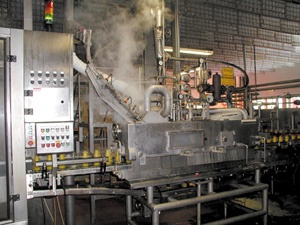Are Ingress Protection (IP) Ratings in Industrial Automation a Necessity?
 These standards help engineers to determine the level of protection required based on the environment in which the machine will operate. With this said the IEC guidelines for ingress protection ratings are used by engineers to insure that machines will meet the environmental requirements specified by the customer over a specified period. Using these guidelines may not be a necessity, but if followed and applied appropriately, they can provide, with some degree of certainty that the machine being designed is not under- or over-engineered.
These standards help engineers to determine the level of protection required based on the environment in which the machine will operate. With this said the IEC guidelines for ingress protection ratings are used by engineers to insure that machines will meet the environmental requirements specified by the customer over a specified period. Using these guidelines may not be a necessity, but if followed and applied appropriately, they can provide, with some degree of certainty that the machine being designed is not under- or over-engineered.In today’s world of high-tech manufacturing plants and facilities, the design and functionality of machines are becoming increasingly sophisticated and multi-faceted – meaning the designs are modular, fast, and smart. To design a machine with these attributes, both machine designers and network engineers are challenged to reduce the overall size of a machine, while improving its intelligence. It also means that machines are becoming more flexible in that they can be quickly disconnected from one application while seamlessly being integrated into another. This is where the ingress protection ratings prescribed by the IEC becomes more of a necessity than a guideline.
Ray DiVirgilio, field solutions manager for Lumberg Automation, has authored a whitepaper to address enclosure-less I/O systems covering the benefits of the system as well as close consideration of ROI.